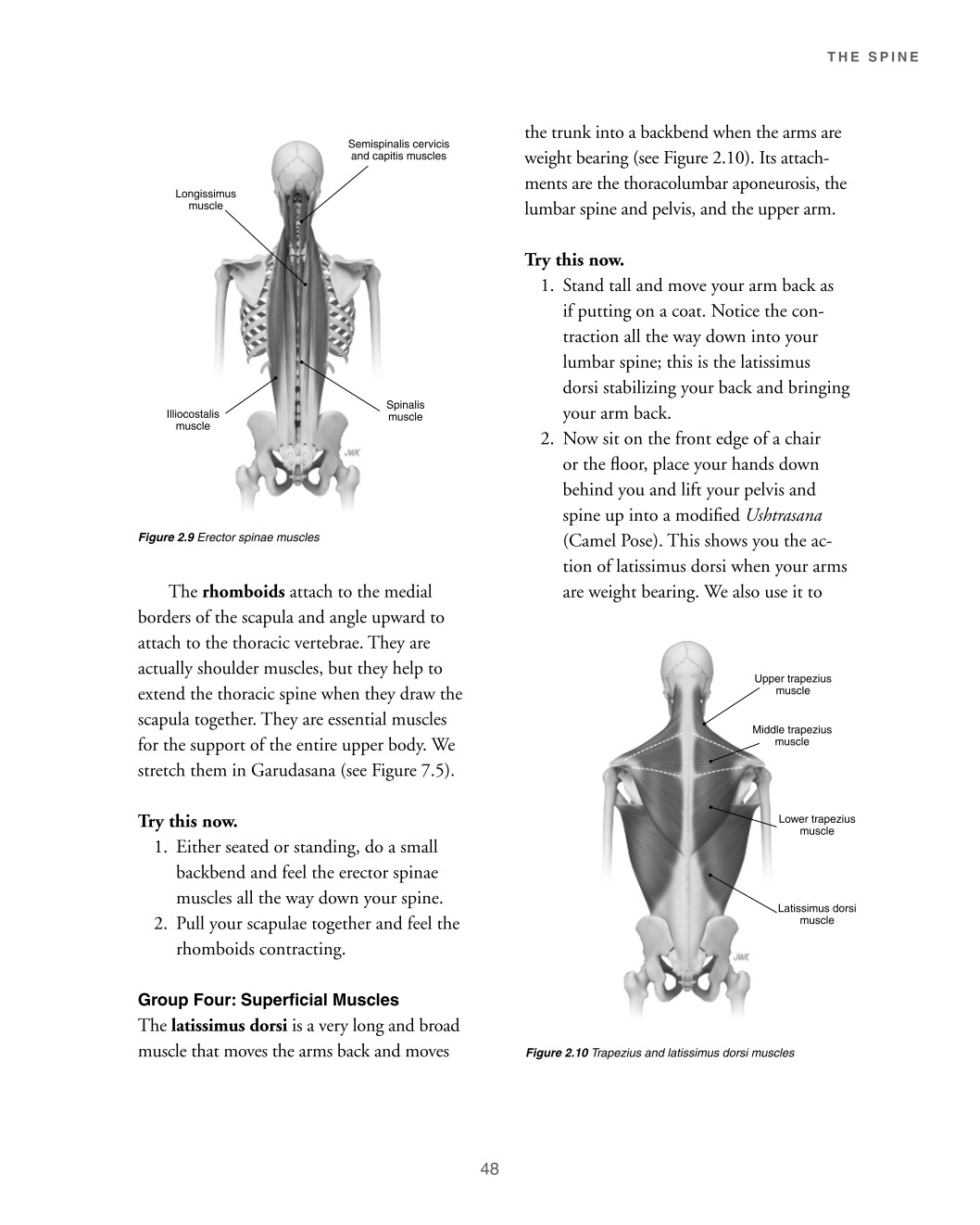

THE SPINE
Semispinalis cervicis and capitis muscles Longissimus muscle the trunk into a backbend when the arms are weight bearing (see Figure 2.10). Its attach- ments are the thoracolumbar aponeurosis, the lumbar spine and pelvis, and the upper arm. Illiocostalis muscle Spinalis muscle Try this now. 1. Stand tall and move your arm back as if putting on a coat. Notice the con- traction all the way down into your lumbar spine; this is the latissimus dorsi stabilizing your back and bringing your arm back. Figure 2.9 Erector spinae muscles The rhomboids attach to the medial borders of the scapula and angle upward to attach to the thoracic vertebrae. They are actually shoulder muscles, but they help to extend the thoracic spine when they draw the scapula together. They are essential muscles for the support of the entire upper body. We stretch them in Garudasana (see Figure 7.5). Try this now. 1. Either seated or standing, do a small backbend and feel the erector spinae muscles all the way down your spine. 2. Pull your scapulae together and feel the rhomboids contracting. Group Four: Superficial Muscles The latissimus dorsi is a very long and broad muscle that moves the arms back and moves 2. Now sit on the front edge of a chair or the floor, place your hands down behind you and lift your pelvis and spine up into a modified Ushtrasana (Camel Pose). This shows you the ac- tion of latissimus dorsi when your arms are weight bearing. We also use it to Upper trapezius muscle Middle trapezius muscle
Lower trapezius muscle
Latissimus dorsi muscle
Figure 2.10 Trapezius and latissimus dorsi muscles
48